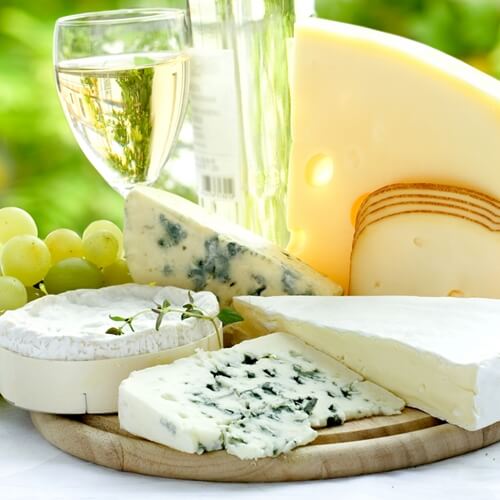6 Gourmet Cheeses Every Chef Should Know

There is no denying that cheese has developed into a tried and true staple of most recipes. Whether it’s pizza, lasagna, pot pies, ravioli, certain chowders, tacos or even dip, cheese is almost everywhere in the kitchen. Yet despite the sheer number of dishes featuring cheese, most chefs only scratch the surface of the vast number of varieties available for purchase. Want to experiment with cheese during your time in culinary academy? Here are just a few of the cheeses you should add to your ever-expanding arsenal:
1. Camembert
Similar to the more well known brie, Camembert cheese is made from cow’s milk and has a decidedly higher fat content. However, cream is usually added to brie quite early in the cheese-making process, thus giving it that signature smooth taste and silky texture. As such, Camembert has a much more intense taste and accompanying aroma, with common descriptions including grainy, nutty and earthy.
2. Manchego
Hailing from the La Mancha region, Manchego is among the more popular cheeses in all of Spain. Made from goat’s milk, the cheese is noted for its unique appearance, as the grass molds that are used leave a unique zigzag pattern on the cheese. Not only is it visually pleasing, but Manchego has an especially sweet taste, comparable to caramel or some tangy fruit.
3. Danablu
A soft cheese, Danablu is noted for one striking visual component: its deep blue veins. These are created when copper wires or rods are inserted into the curds during the early stages of the cheese-making process. Danablu has an especially intense odor for a soft cheese, and the accompanying taste – the rind is also edible – is an equally intense mix of salty and semi-bitter flavors.
4. Emmental
Despite the sizable holes, emmental is noticeably different from most standard Swiss cheeses. For one, it hails from the Emmental Region, a place whose culture is an intriguing mix of Swiss and German. This unique background has resulted in a cheese that not only has a much lower fat content than other hard cheeses, but is noted for being especially mild and nutty in taste.
5. Sage Derby
Unlike most cheeses on this list, Sage Derby is far less common in most kitchens. Usually, it’s reserved for special holiday celebrations – namely Christmas – undoubtedly because the blending and fermentation process can take up to six months. Yet Sage Derby is known for its versatility, with the mild flavors pairing well with vegetable, fruit and poultry dishes.
6. Old Ford
Though it is a goat cheese, Old Ford is nothing like its counterparts. Instead, it’s got a far more dense and firm texture, making for a unique experience over the more fluffy goat cheeses like Garrotxa and Brunet. Old Ford’s aromas are also more robust – with hints of spice – and the accompanying buttery aftertaste is far more subdued and subtle. All of this is thanks to Old Ford being made with aged goat’s milk, a relatively uncommon practice in cheese-making circles.


